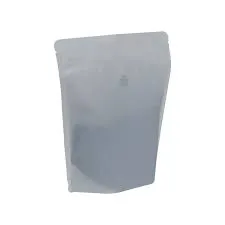- Afrikaans
- Albanian
- Amharic
- Arabic
- Armenian
- Azerbaijani
- Basque
- Belarusian
- Bengali
- Bosnian
- Bulgarian
- Catalan
- Cebuano
- chinese_simplified
- chinese_traditional
- Corsican
- Croatian
- Czech
- Danish
- Dutch
- English
- Esperanto
- Estonian
- Finnish
- French
- Frisian
- Galician
- Georgian
- German
- Greek
- Gujarati
- haitian_creole
- hausa
- hawaiian
- Hebrew
- Hindi
- Miao
- Hungarian
- Icelandic
- igbo
- Indonesian
- irish
- Italian
- Japanese
- Javanese
- Kannada
- kazakh
- Khmer
- Rwandese
- Korean
- Kurdish
- Kyrgyz
- Lao
- Latin
- Latvian
- Lithuanian
- Luxembourgish
- Macedonian
- Malgashi
- Malay
- Malayalam
- Maltese
- Maori
- Marathi
- Mongolian
- Myanmar
- Nepali
- Norwegian
- Norwegian
- Occitan
- Pashto
- Persian
- Polish
- Portuguese
- Punjabi
- Romanian
- Russian
- Samoan
- scottish-gaelic
- Serbian
- Sesotho
- Shona
- Sindhi
- Sinhala
- Slovak
- Slovenian
- Somali
- Spanish
- Sundanese
- Swahili
- Swedish
- Tagalog
- Tajik
- Tamil
- Tatar
- Telugu
- Thai
- Turkish
- Turkmen
- Ukrainian
- Urdu
- Uighur
- Uzbek
- Vietnamese
- Welsh
- Bantu
- Yiddish
- Yoruba
- Zulu
polyethylene material
The Versatility and Importance of Polyethylene Material
Polyethylene, a polymer made from the polymerization of the ethylene monomer, is one of the most widely produced plastics in the world. Introduced in the 20th century, this versatile material has become an essential component in countless applications across various industries, due to its diverse properties, cost-effectiveness, and adaptability.
Types of Polyethylene
There are several types of polyethylene, each possessing unique characteristics suited for different applications
. The most common types include1. Low-Density Polyethylene (LDPE) Known for its flexibility and low density, LDPE is often used in plastic bags, film wraps, and containers. It has excellent chemical resistance, making it suitable for packaging purposes.
2. High-Density Polyethylene (HDPE) Characterized by its greater strength and rigidity compared to LDPE, HDPE is often utilized in products such as milk jugs, detergent bottles, and piping. It also has a higher melting point, making it suitable for products requiring durability.
3. Linear Low-Density Polyethylene (LLDPE) This variant combines the properties of LDPE and HDPE, providing good tensile strength and impact resistance. LLDPE is often used in packaging films and stretch film applications.
4. Ultra-High Molecular Weight Polyethylene (UHMWPE) This type is known for its exceptional strength and impact resistance. It's often used in medical applications, such as joint replacements, and in industrial settings for conveyor systems and wear strips.
Applications in Various Industries
polyethylene material

Polyethylene’s inherent properties make it valuable across multiple sectors. In the packaging industry, it plays a critical role, with films and containers made from polyethylene being ubiquitous in everyday consumer products. Its lightweight and moisture-resistant qualities allow for effective preservation of food and goods, significantly reducing waste.
In construction, polyethylene is a favorite material for insulation, vapor barriers, and piping. Its resistance to chemicals and moisture helps in developing structures that are both durable and reliable. Moreover, in the medical field, polyethylene’s biocompatibility and ease of sterilization have made it a popular choice for medical devices and pharmaceuticals.
Environmental Considerations
Despite its widespread use and benefits, polyethylene has faced criticism due to its environmental impact. As a non-biodegradable material, polyethylene can contribute to pollution and waste management challenges. The growing awareness of these issues has prompted the industry to explore eco-friendly alternatives and recycling initiatives.
Many organizations now emphasize the importance of recycling polyethylene. Recyclable materials, marked with the recycling symbol, can be collected and turned into new products. Advances in recycling technology allow for the transformation of used polyethylene into various items, thereby reducing reliance on fossil fuels and minimizing landfill waste.
In addition to recycling efforts, the development of biodegradable alternatives to polyethylene has gained traction. Innovations in bioplastics, made from renewable resources, aim to retain the favorable characteristics of traditional polyethylene while offering environmentally sustainable solutions.
Conclusion
Polyethylene material is a cornerstone of modern manufacturing and consumer products, offering a blend of versatility, durability, and cost-effectiveness. Its extensive applications range from everyday packaging to critical medical supplies, making it indispensable in our daily lives. However, as the world becomes increasingly aware of environmental issues, the industry faces the challenge of balancing the benefits of polyethylene with sustainability efforts.
Through ongoing advancements in recycling and the exploration of biodegradable alternatives, the future of polyethylene can align more closely with ecological considerations. As we move forward, it is essential for consumers, manufacturers, and policymakers to collaborate in promoting responsible use and disposal of polyethylene products, ensuring they contribute positively to both society and the environment.













